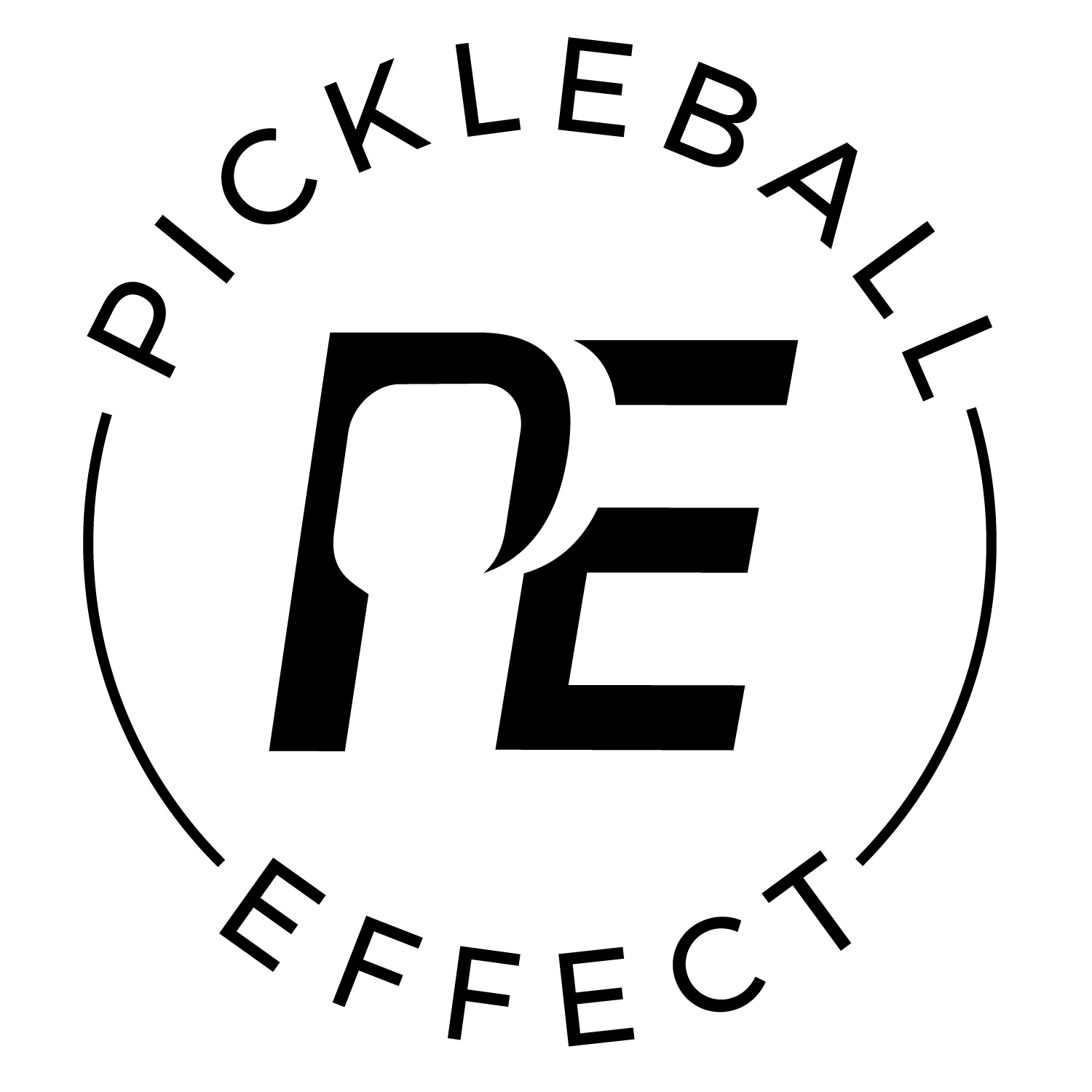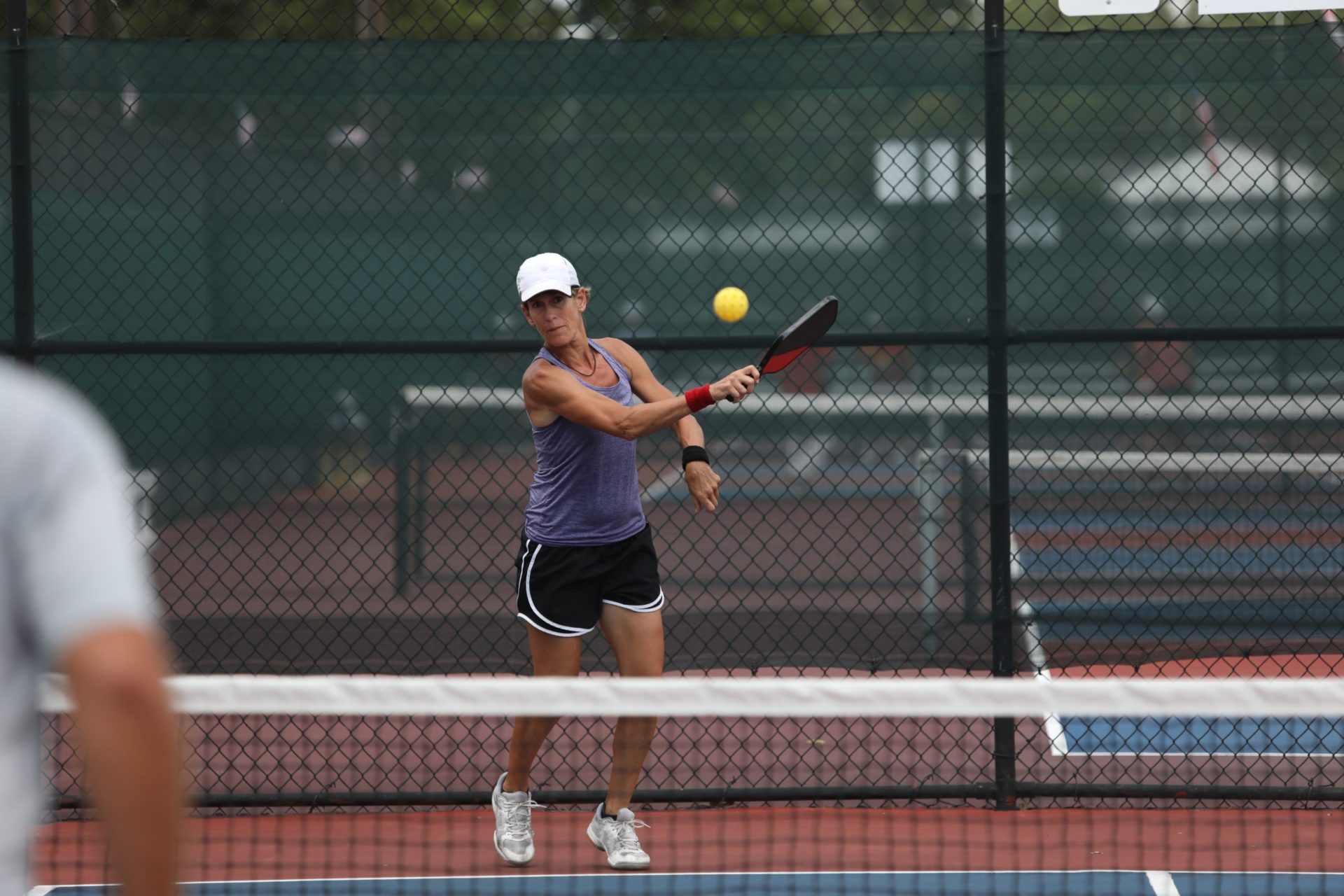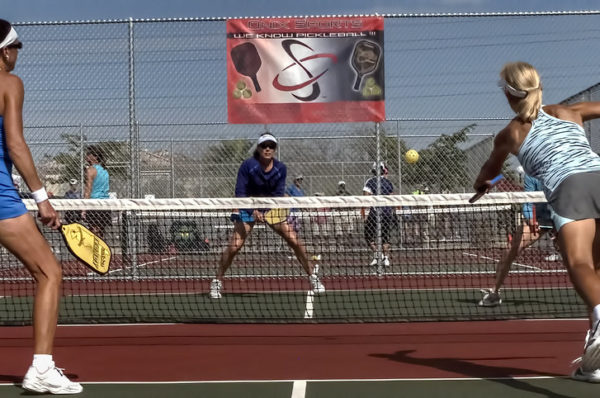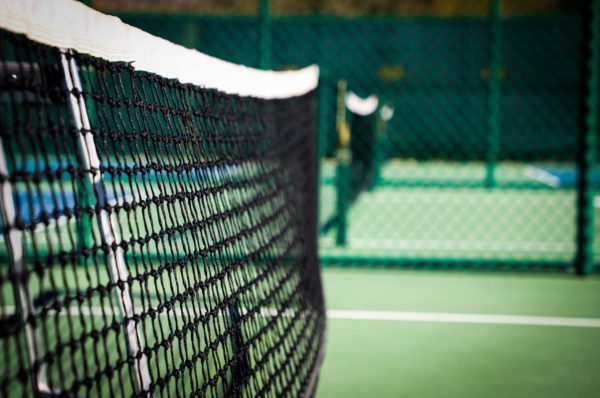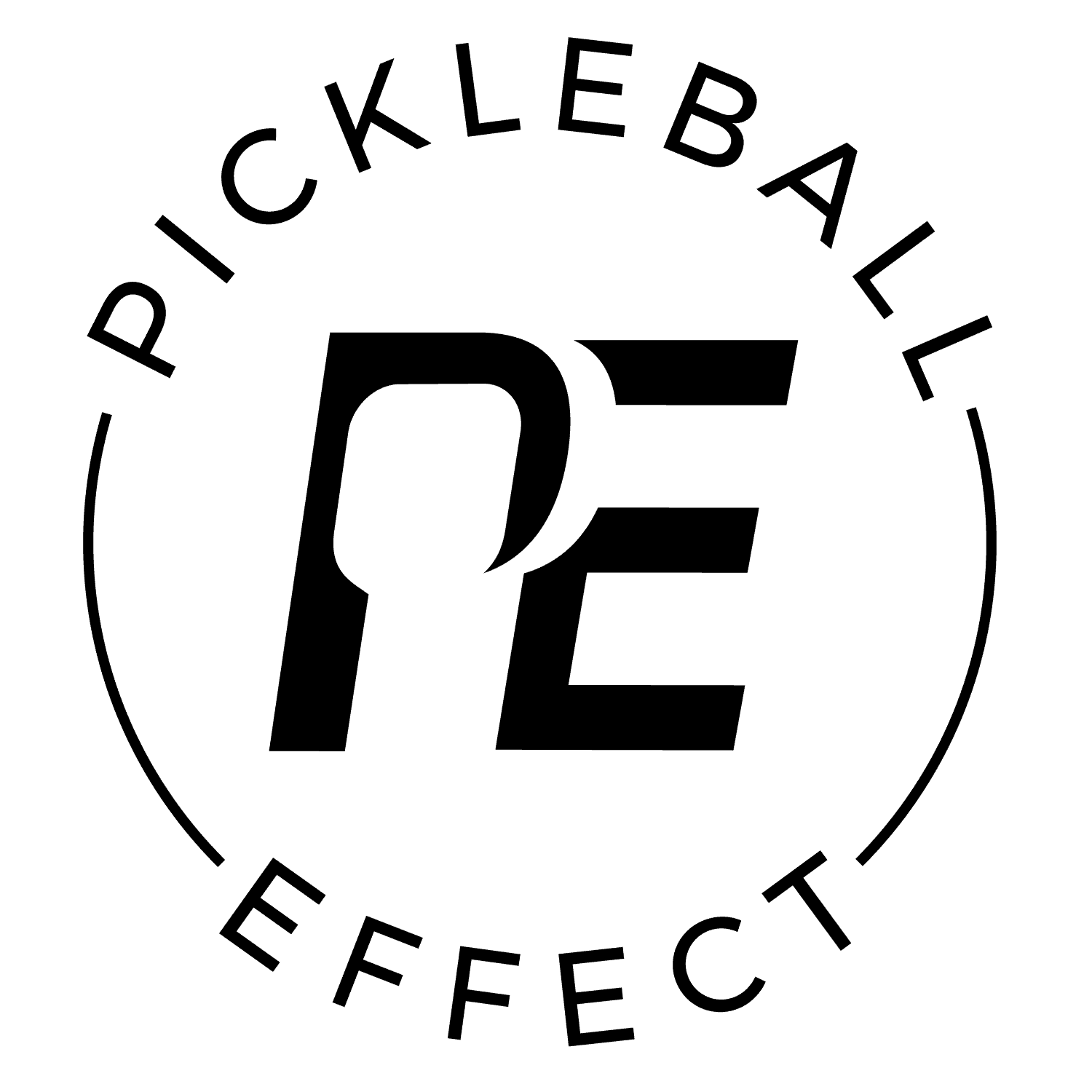Serving is the most under valued part of the game in pickleball. Especially in doubles pickleball. For some reason, the preaching and practicing of conservative serves in the name of “if you don’t get your serve in play then you can’t win the point” has dominated talks about how to serve in pickleball. I would argue that an overly conservative serve is just as damaging as missing a serve. If your team struggles to score, I would evaluate your serving strategy. I bet a more aggressive and intentional serving strategy will help you score more points for your team because it keeps you in control of the rally and sets up your attack.
Read on to learn how to serve in pickleball to transform your game and set up your team to score more points.
Why the Serve is One of the Most Important Shots in Pickleball
Before we get to the specific tips about how to serve and improve your pickleball serving strategy, it’s important to understand the goal of the serving team. Their goal is get to the net to equalize control of the court and give themselves the best chance to score. Before each point starts, the serving team is at a disadvantage because they have to let the return of serve bounce while the other team takes their positions at the net. If the defensive team can keep the attackers from getting to the net with them, then they are likely to win the rally.
This is where the importance of the serve comes in. If you have a good serving strategy that keeps your opponents unbalanced or makes it difficult to hit a good return of serve, then it makes it that much easier for your team to hit a good third shot that allows you to get to the net and equalize control of the court.
A weak serve let’s your opponent take the shot they want, making it difficult for your team to get to the net and give yourself the best chance to score. And if you can’t score, then you won’t win.
Serving Tip #1: Don’t be Afraid to Miss a Serve Every Once in a While
Many players are too conservative with their serves in the name of keeping it in play 100% of the time. If you are too conservative, then you’re putting your team at risk of a good return that makes it hard for you to gain control of the rally and give yourself a chance to score. It’s okay to miss a serve every once in a while because you are pushing the envelope a little.
You’ll read a lot of blogs that say, “Don’t ever miss a serve, you’ll lose the point every time.” Forget that. Conservative serves that never miss will cause your team to lose more rallies in the course of the game than being a little more aggressive will. Intentional, aggressive serves that occasionally miss their mark but set up your team to win more rallies is better in the long run.
Serving Tip #2: Serve it Deep
Serving it deep forces your opponent to hit their return from behind the baseline, which in turn, makes it more difficult to hit the return deep. If the return is shallow, then it gives you an easier drop shot or opens the door for an effective drive into open space.
Here’s an example of a poor serve to the middle of the opponents box from a 5.0+ match. Let’s break this point down, starting with the serve.
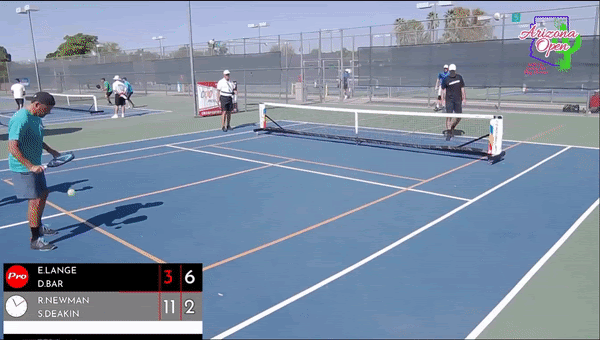
The server hits a conservative serve right to the middle of the opponents box. The returner hits the shot he wants deep and down the baseline. Because the return was so deep, it forced the player to take the third shot behind the baseline with backward momentum. He hits a good drop but is unable to advance all the way to the net and the other team hits the ball to his feet and keeps him back until they win the point.
Because the serve wasn’t deep, it put the attacking team at a bigger disadvantage than they already were from the start.
This sequence also helps prove my point that conservative serves can often hurt you more than help you.
Keep your serves deep to keep your opponents from returning it deep. Now, I will say there are times when you don’t need to hit it deep to make the serve difficult on your opponent, which we’ll talk about later in the article. But, in general, you want the majority of your serves to be deep.
Serving Tip #3: Mix up Your Serves to be Unpredictable
If you serve it the same way and in the same spot each time, then your opponent gets used to it and will get better at returning it. You are predictable. You want your serves to be unpredictable.
You can mix up the pace, the spin, your target, and the arch. Go to the courts to practice and experiment with a few different serves until you have a handful you are comfortable using in a match. It’s okay to take risks with your serve sometimes to keep your opponents on their toes.
When I am serving, I have a different set of serves and targets for the even and odd side of the court. Here are some examples of serves that I use on the even side. Keep in mind that I am right handed, so these targets may need to be changed up to fit the strengths of a left hander.
Serving on the Even Side
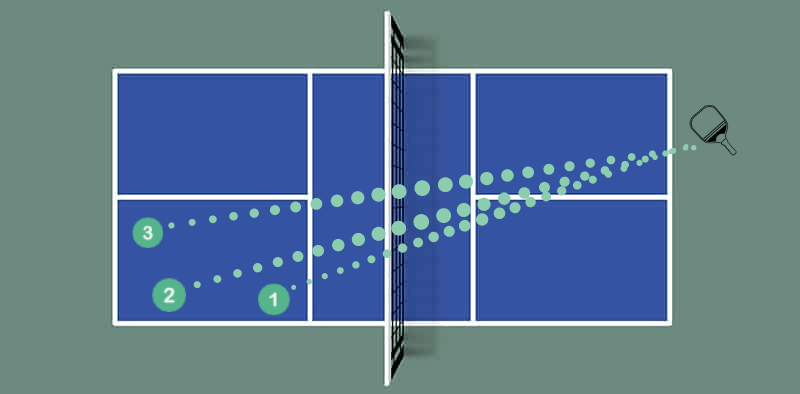
The three spots in the image above are my targets, but I have a few different serves I use with each target. Here’s a breakdown of what they are.
Target 1: This is a soft topspin serve that I hit to the corner. I don’t use this one a lot, it requires some set up before I use it. I’ll often do a few deep serves to targets 2 and 3 and when I notice they are stepping back a little more than usual before I serve, then I’ll hit this softer serve to target 1 to make them run up and hit an unbalanced return.
Target 2: I have two serves I use with this target. A driven topspin serve and a arching medium pace serve. This target is set up well after I hit a couple serves to target 3. This is because some people like to favor their forehand and they overcompensate by starting too close to the center line and then I make them reach to get my serve that hits target 2.
Target 3: This is probably my most common target because it forces my opponent to use their weaker backhand. I use a driven topspin, and arching medium pace topspin, and a driven sidespin serve to hit this target. Hitting this target a few times in a row sets up targets 2 and 1 really well.
I have different targets and serves when I am on the odd side of the court. Let’s look at those next.
Serving on the Odd Side
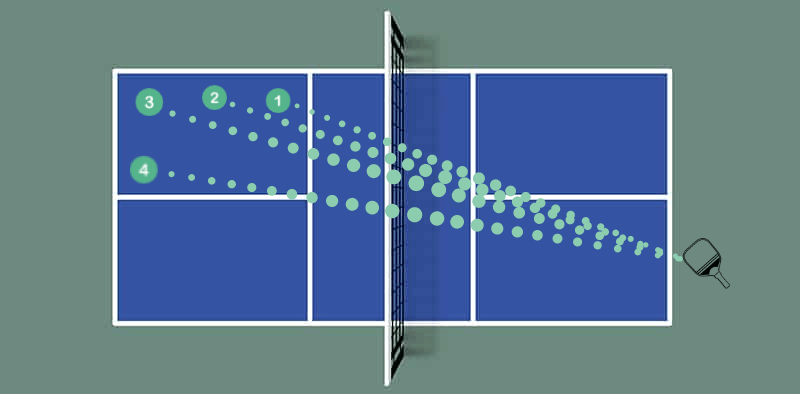
The four spots in the image above are my targets, but I have a few different serves I use with each target. Here’s a breakdown of what they are.
Target 1: This is a soft, left to right sidespin serve. Not only is it short and soft, but it kicks to the right, making it a little harder to reach.
Target 2: When I’m aiming for this target I use a driven, left to right sidespin serve. I put a lot of sidespin on it so it kicks hard to the right. Because I’m right handed, this is a serve I can do on the odd side but not on the even side. It gets to the spot quick, kicks right, and forces my opponent to lunge for it when I set it up right. This serve is really good after hitting targets 3 and 4 a few times.
Target 3: This is probably my most common target because it forces my opponent to use their weaker backhand. I use a driven topspin, an arching medium pace topspin, and a driven sidespin serve to hit this target. Hitting this target a few times in a row sets up targets 2 and 1 really well.
The driven sidespin shot to this target is especially effective when there is a little wind at my back.
Target 4: This is a hard spot to hit and requires a lot practice to consistently get it in, but I use a driven topspin and an arching medium pace topspin to hit this target. I will go for this target if my opponent is standing to close to the sideline because this serve makes them take a few steps to the right before they can hit it.
Pro Tip: When deciding what target and serve to hit, look at your opponent’s positioning on the court to help you decide. Are they standing close to the baseline? Then hit a deep serve that makes them step back. Are they standing too close to the center line? Then hit a target near the sideline to make them move. Don’t methodically go through each target and serve you have, take what your opponent is giving you.
Serving Tip #4: Know the Pickleball Serving Rules
You’d be surprised how many people don’t know what is a legal and illegal pickleball serve. Those that don’t know the rules tend to be more conservative with their technique and creativity. If you know the rules then you know what your limits are when experimenting and creating new serves.
For a serve to be legal you need to conform to the following rules:
- Make contact with the ball below your belly button
- Your swing has to be an upward or low to high motion
- The highest point of the paddle can’t be above your wrist
Below is a great video showing what is a legal and illegal serve in pickleball.
These rules allow you to generate quite a bit of topspin with a traditional groundstroke motion and you can get creative with how much sidespin you put on the ball by changing the angle of your paddle and the low to high motion you use.
Push the limits here and create some serves that will throw off your opponents and keep them guessing.
Summary
By being more intentional about how you serve in pickleball and being a little more aggressive with your serves, you’ll find that you’ll win a couple points from your serve and you’ll set yourself up for easier third shots. Which, in turn, will give you more opportunities to score and win matches.
